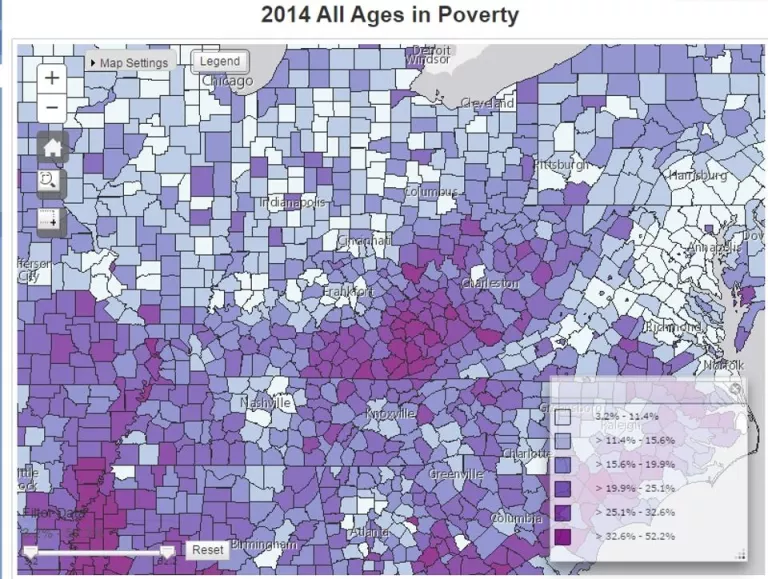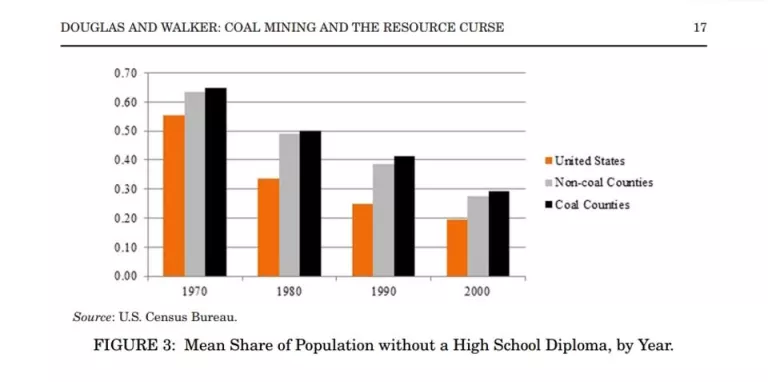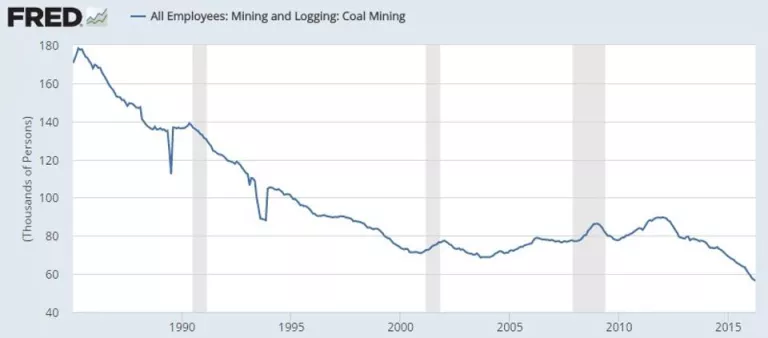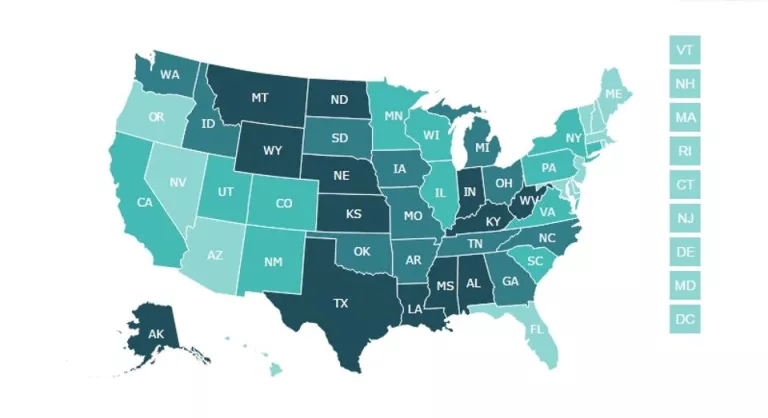- | Housing Housing
- | Expert Commentary Expert Commentary
- |
Will Trump's Policies Help Appalachia and Similar Places?
America became the largest and most dynamic economy in the world by having low taxes that incentivized production and low regulation that allowed resources to easily flow to their highest valued use. Creative, innovative, hardworking people drive prosperity and America has an abundance of them, and there are more that want to get in. We just need to let them do their thing.
Donald Trump shocked a lot of people when he became President-elect last week. Many of the pre-election polls had him down in several key swing states, including Ohio, Pennsylvania and North Carolina, but he ultimately won all three and performed better than expected in Virginia.
As usual, the economy was a big issue this year. According to exit polls, 60% of voters had a negative opinion about the economy, and Trump seems to have been their preferred choice.
Relative to Mitt Romney in 2012, Trump performed better in counties where more of the jobs are threatened by automation or offshoring, which is likely a sign of residents’ anxiety about the future of work. He also did better in counties with slower job growth and lower earnings.
Perhaps no area of the country is more familiar with the nation’s economic woes than Appalachia, where Trump dominated. Luzerne County, Pennsylvania, which the government includes in its definition of the Appalachian region, is a prime example of Trump’s popularity there. As the Wall Street Journal reported, “In working-class Luzerne County, PA… [Trump] turned a 5-point Democratic lead from 2012 into a 13-point GOP advantage.”
In addition to Pennsylvania and North Carolina, Trump also won Kentucky, West Virginia and Ohio, plus four other traditionally Republican-leaning states that contain Appalachian counties: South Carolina, Georgia, Alabama and Mississippi.
Understanding Appalachia’s economy and why it is struggling can help us understand Trump’s appeal there.
Appalachia, coal and poverty
Nearly eight years after the recession the prime-age (25-54) labor force participation rate is still near all-time lows, especially for males. The labor forces in West Virginia, Michigan, Ohio, Kentucky and Mississippi are smaller now than they were prior to the recession. In many areas of these states there is little economic opportunity, despite the modest nationwide recovery, and these labor force declines reflect that.
Poverty is also prevalent in Appalachia. The figure on the left from the U.S. Census is zoomed in on Appalachia and shows the percentage of the population in poverty by county in 2014. White is the lowest percent of poverty (3.2% to 11.4%) and dark pink is the highest (32.6% to 52.2%). 
The dark pink counties are primarily in West Virginia and Eastern Kentucky, but the purple counties are located throughout the region.
So why does Appalachia fare so poorly? Perhaps surprisingly, recent research links the region’s poor economic conditions to its most famous natural resource—coal.
The new study, written by economists Stratford Douglas of West Virginia University and Anne Walker of University of Colorado Denver, examines how Appalachian counties’ dependence on coal affects long-run per-capita income growth.
The authors find evidence of a coal resource curse in Appalachia. In the long-term they estimate that an increase in coal dependence lowers per-capita income growth by 0.5 to 1 percentage points per year. Because of the exponential nature of growth, small differences in growth rates can lead to large differences in per-capita income over time. Over a period of 40 years per capita income would increase by 220% with a 2% growth rate, versus only 149% with a 1% growth rate.
The idea that coal dependence could have a negative effect on income growth is known as the resource curse. More generally, the resource curse is the idea that areas that contain an abundance of a natural resource, such as coal, oil or diamonds, have worse long-run economic outcomes than similar areas that don’t contain such resources. Much of the research that identifies a resource course points to poor institutions as the cause, particularly at the national level. Countries with a lot of natural resources tend to breed authoritarian governments that mismanage the economy and stifle economic growth.
At the local level in a place like Appalachia—located within a country with relatively good institutions and across a variety of states with wealthier areas—the institutional explanation of the resource course is not as obvious. But it is possible that local institutions such as political patronage or public corruption harm the economy.
Another mechanism, which the authors examine, is educational attainment. The idea is that many people may not find it worthwhile to finish high school or go to college when relatively good paying jobs in coal mining are readily available. For them, forgoing education for the immediate wages of coal mining makes economic sense. A similar story could be told about areas that at one time had an abundance of good-paying factory jobs, such as Flint, MI or Dayton, OH.
Additionally, the types of jobs available for college graduates in coal-mining counties are usually those with the lowest returns to a college degree. Going to college to get a high-paying job in software engineering makes more financial sense than going to college to become a social worker or K-12 teacher, especially when similar paying jobs that don’t require a college degree are available in the coal industry (and historically didn’t even require a high school degree). When the available jobs are of the low-return variety less people will expend the resources to go to college.
Low educational attainment harms an economy because the development of human capital is very important for long-run economic growth. If a lot of an area’s workers forgo education—or leave after they get it—the area’s economy will eventually suffer. The Appalachian region trails the rest of the U.S. in terms of its share of the population without a high school degree and coal-dependent counties fare the worst, as shown in the figure to the left. 
The authors find evidence that coal dependence does impact the accumulation of human capital in the Appalachian region: People are less likely to complete high school or college in coal-abundant counties, but the effect is small. It only makes up about 13% of the decrease in the growth rate discussed above.
Decline of coal
Even though the cause of the resource curse is not entirely clear, it is clear that Appalachia is not doing well and hasn’t been for some time. Despite its long-term negative effects, over the years employment in the coal mines helped a lot of people in the region live respectable lives. But now coal employment is in the midst of a long-term decline. The figure to the left shows the number of people employed in coal mining in the U.S. since the mid-1980s. 
Over this period coal mining employment declined from nearly 180,000 to less than 60,000. As the coal industry declines other businesses decline too. Coal workers are the patrons of the region’s restaurants, stores, mechanics and other service sector businesses. Without a robust exporting industry the service sector of these local economies stagnates and declines as well.
Will Trump’s policies help?
The support of blue-collar workers in Appalachia and elsewhere helped Trump become President-elect. Many rallied around his tough talk on trade and corporate offshoring. But his protectionist policies to address those issues— renegotiating NAFTA, withdrawing from the Trans-Pacific Partnership (TPP) deal and using tariffs to discourage firms from offshoring their operations—won’t help the region much and will harm many.
Free trade makes the world a better place. It reduces prices for consumers, increases their choices and supports jobs, both by freeing up resources to be used on other things and by opening up markets for American exports. A worldwide retraction of trade will not help the average American.
The steady decline of the coal industry is partly due to economic factors such as low natural gas prices and partly due to federal regulatory efforts to reduce carbon dioxide and mercury emissions. Trumps anti-trade policies don’t directly address these issues. But two of Trump’s other ideas, reducing regulation and lowering the corporate tax rate, will help America’s workers.
Federal regulation affects states differently depending on their industry makeup. To measure these disparities, my colleagues at the Mercatus Center constructed the FRASE index, which uses data from the Code of Federal Regulations to construct a measure of how federal regulations affect a state’s economy. As shown in the map to the left, the most regulated states tend to be energy-producing states, including several states with Appalachian counties such as Kentucky, West Virginia, Alabama and Mississippi (darker states are more regulated). 
Reducing unnecessary and overly burdensome federal regulations will help state and local economies across the country by reducing compliance costs and making it easier for people to start and expand businesses.
Reducing regulation is often difficult, but luckily there’s a model for Trump and congress to follow: The Canadian province of British Columbia instituted a policy that cut red tape by 37% and a similar policy was recently enacted that applies to the entire country. There’s no reason why the British Columbia model can’t work in the U.S.
But even though regulation has harmed the coal industry, the goal of reducing regulation should not be to regrow it. The rise of fracking in places like North Dakota has positioned natural gas as a cheaper, cleaner alternative to coal, and this will likely be the case going forward. Appalachia and other areas built around old industries such as coal, steel and labor-intensive manufacturing won’t prosper by focusing on the past. Growing, thriving economies are those that constantly adapt and advance. Additionally, the research on the coal resource curse shows that coal is probably not the best long-term strategy for a prosperous economy.
The real purpose of reducing regulation is to kick-start more entrepreneurship and innovation. Since no one can see the future, reducing regulation is important because it allows more people to try more things, some of which will catch on, grow and provide the goods and services—and jobs—of the future.
Trump also supports reducing the corporate tax rate. A reduction of the corporate tax rate will make America a more competitive place to do business and lead to higher wages by boosting worker productivity.
A lower corporate tax rate combined with less regulation would improve America’s business environment and generate more economic growth. Coincidentally, these domestic policies would strengthen the labor market and likely (hopefully) make protectionism a non-issue.
People in many parts of the country are feeling left out. Their jobs are disappearing, their communities are eroding and they aren’t sure how to fix it. But the solutions do not lie overseas—they are right here. America became the largest and most dynamic economy in the world by having low taxes that incentivized production and low regulation that allowed resources to easily flow to their highest valued use. Creative, innovative, hardworking people drive prosperity and America has an abundance of them, and there are more that want to get in. We just need to let them do their thing.